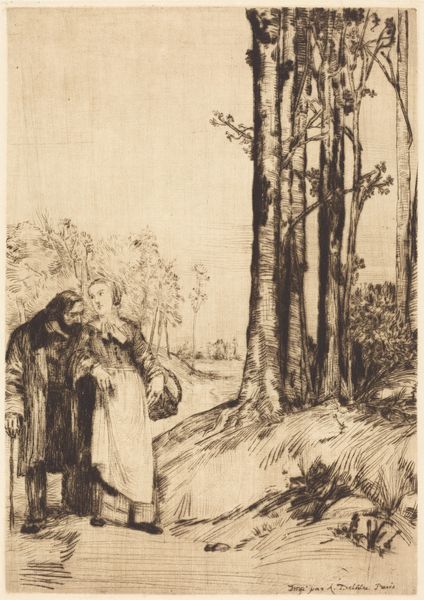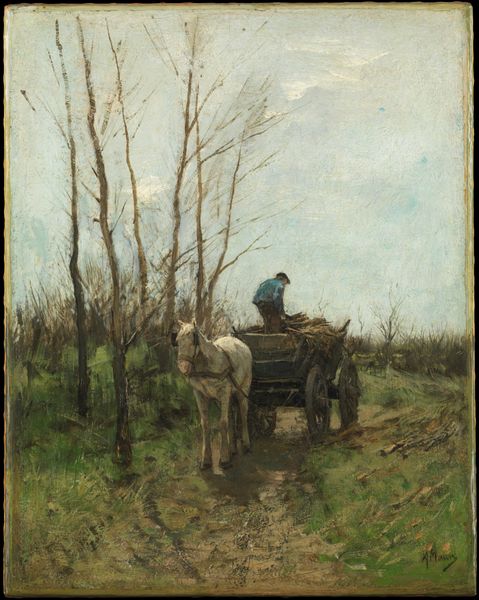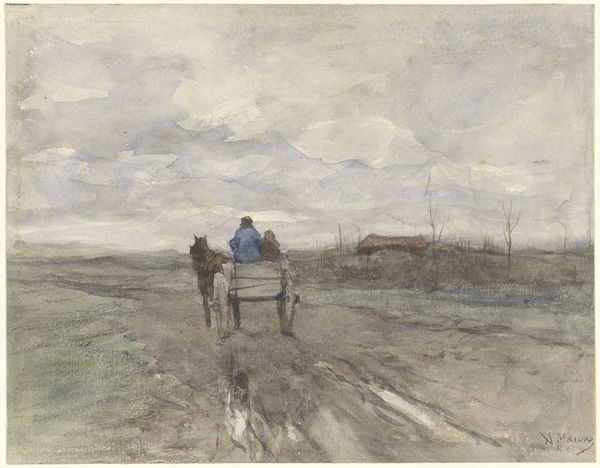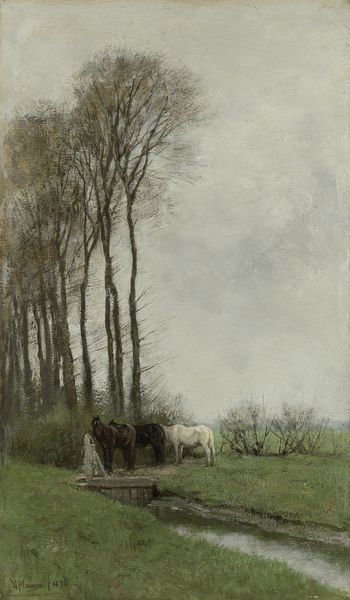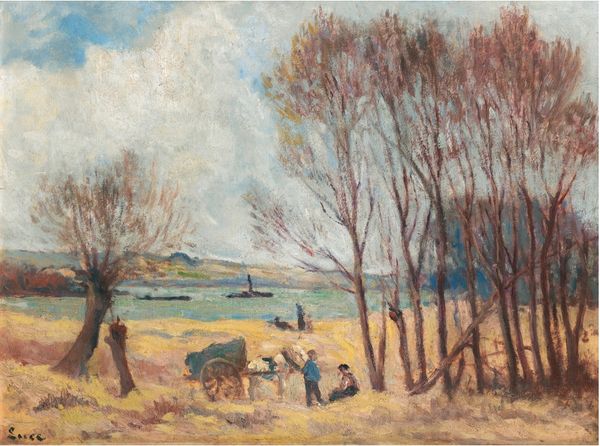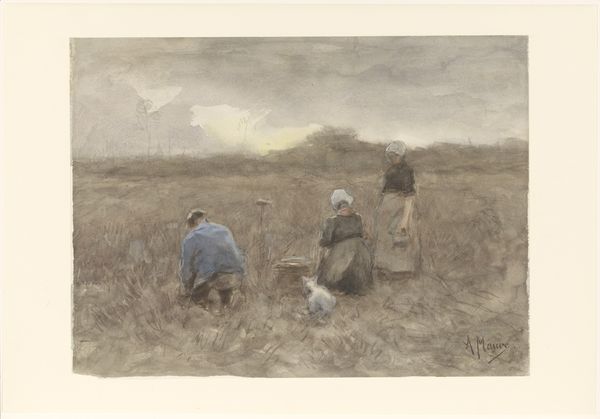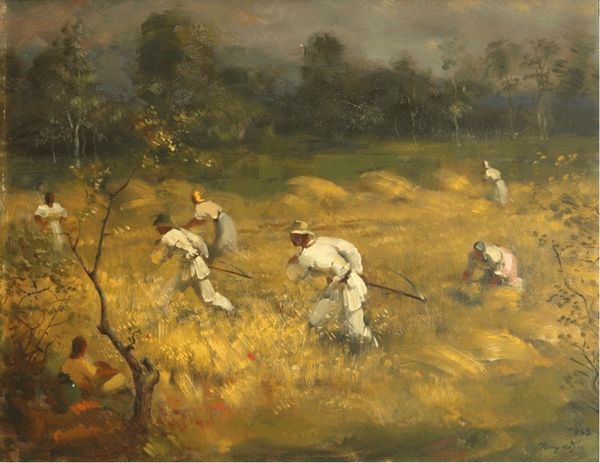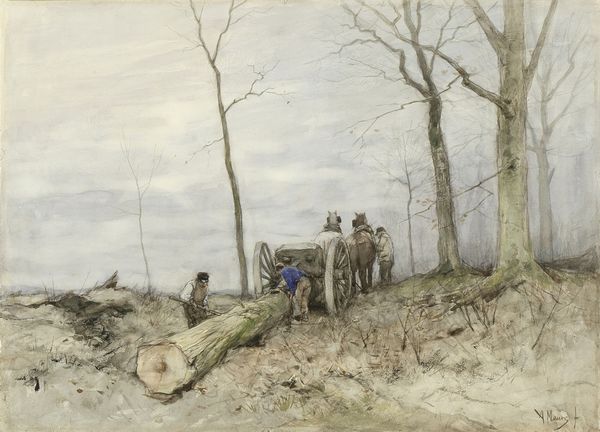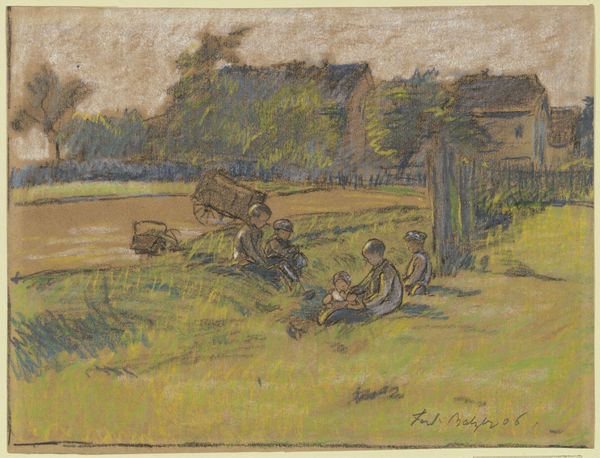
drawing, paper, watercolor, pastel
#
drawing
#
dutch-golden-age
#
impressionism
#
landscape
#
paper
#
oil painting
#
watercolor
#
coloured pencil
#
genre-painting
#
pastel
#
mixed media
#
watercolor
#
realism
Dimensions: 488 × 342 mm
Copyright: Public Domain
Editor: So this drawing, titled "The Forester's Cart" by Anton Mauve, seems to be rendered in watercolor and pastel on paper. The eye is immediately drawn to the log in the foreground, and yet, there is a rather melancholy atmosphere pervading the landscape. How do you interpret this work? Curator: It’s interesting that you perceive melancholy, because what I see initially is the depiction of labor and its connection to a changing landscape. This piece, like much of Mauve's work, presents a seemingly straightforward scene of rural life. However, if we look at the broader context, we might ask, what does it mean to depict the removal of timber in this period? What sort of audience was the artist trying to attract with this imagery? Editor: I hadn't considered the audience or the act of deforestation as a subject matter in itself. So, were there specific socio-political currents influencing Mauve's choice to portray this scene? Curator: Absolutely. Remember that this work emerges in a time of increasing industrialization and urbanization. Many artists found themselves grappling with how to represent rural life. The ‘natural’ was a subject but also an idea, charged with political meanings for various publics, evoking both nostalgia for an agrarian past but also the need to showcase this disappearing past for the elite audiences who purchased these images. The public display of these images played into larger narratives around progress, labour and its impact on our social environments. Editor: So, Mauve isn’t simply documenting a scene, but participating in a dialogue about the changing relationship between humans and nature, particularly the exploitation of natural resources. It makes me wonder if the seeming casualness of the impressionistic style is, in itself, a kind of argument. Curator: Precisely. The "casualness," as you call it, naturalizes something that wasn't necessarily seen as "natural" at all. And its public exhibition reinforced ideas and prejudices already present in society, adding another layer of interpretation. Editor: It really opens my eyes to see how this seemingly simple landscape interacts with cultural and socio-political contexts, creating a multifaceted dialogue beyond its visual representation.
Comments
No comments
Be the first to comment and join the conversation on the ultimate creative platform.
